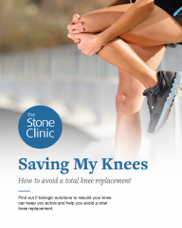Lateral Collateral Ligament (LCL) injury
LCL/PLC reconstruction is important to avoid rotational instability of knee and subsequent cartilage damage. Depending on the extent of the damage, we are able to reattach the ligament with sutures or reconstruct it using donor tissue.
Anatomy
The lateral collateral ligament (LCL) is a one of the four major ligaments in the knee. The LCL is on the outside of the knee connecting the thighbone (femur) to the smaller bone in the lower leg (fibular). Its main function is to avoid varus stress across the knee (where the knee buckles outwards). Together with the popliteofibular ligament, the capsule of the joint and the popliteus tendon, it forms the PLC Complex which provides external rotational stability.
Injury
Injuries to the LCL and posterior lateral corner result from a rotational force across the knee often with buckling of the knee. A contact injury, such as a direct blow to the medial side (inside of knee), or a noncontact injury, such as a hyperextension stress. It is also commonly associated with an ACL tear which occurs with a high level of force and sports injury.
Symptoms
- Feeling that the knee may give way under stress and isn't stable
- Pain that can be mild or acute
- Swelling and tenderness along the outside of the knee
- A locking or catching in the joint when it is moved
- Numbness or weakness in the foot may occur if the peroneal nerve, which is near the ligament is stretched during the injury or is pressed by swelling in surrounding tissues
Diagnosis
A careful eye is needed to diagnose a posterolateral and lateral injury; even an experienced physician can miss it, especially when it’s associated with an ACL injury, as the focus of the doctor and patient is on the ACL reconstruction.
- Ecchymosis, skin abrasions can show side of injury
- Examination of the anterior cruciate ligament (ACL), posterior cruciate ligament (PCL), and medial collateral ligament (MCL) should be carefully done
- To isolate the LCL, apply a varus stress to the knee at 30 º of flexion presence or absence of an endpoint, compare to normal side.
- Also prone “dial” sign is useful for the posterolateral corner
- The ankle plantar flexion and dorsiflexion, as well as foot eversion and inversion should be checked to rule out peroneal nerve irritation or injury.
- For surgeons, intraoperative drive through sign is an important finding during arthroscopy, if found, LCL or PLC (posterolateral corner) should be treated
X Ray may be normal. MRI has an accuracy of showing 90% tears of posterolateral corner, cartilage, cruciates, and menisci however with isolated corner injuries the findings are often missed.
Treatment
The lateral collateral ligament does not heal well as a medial collateral ligament (MCL). For a minor tear, we suggest non-surgical treatment, which consists of rest, use of leg brace and icing. When the pain and swelling are gone, start exercises with a physical therapist to restore strength and range of motion of knee. Recovery is seen depending upon grade of injury.
When a high grade acute tear is present, we reattach the ligament to the femur or fibula using large stitches or a suture anchor depending upon the tear. A midsubstance tear can be sewed end to end together in the early stages. Surgical management includes open ligament reconstruction with allograft. We use our technique of mini open reconstruction with key hole incision and use donor tissue for the optimal reconstruction of PLC Complex ligament.


